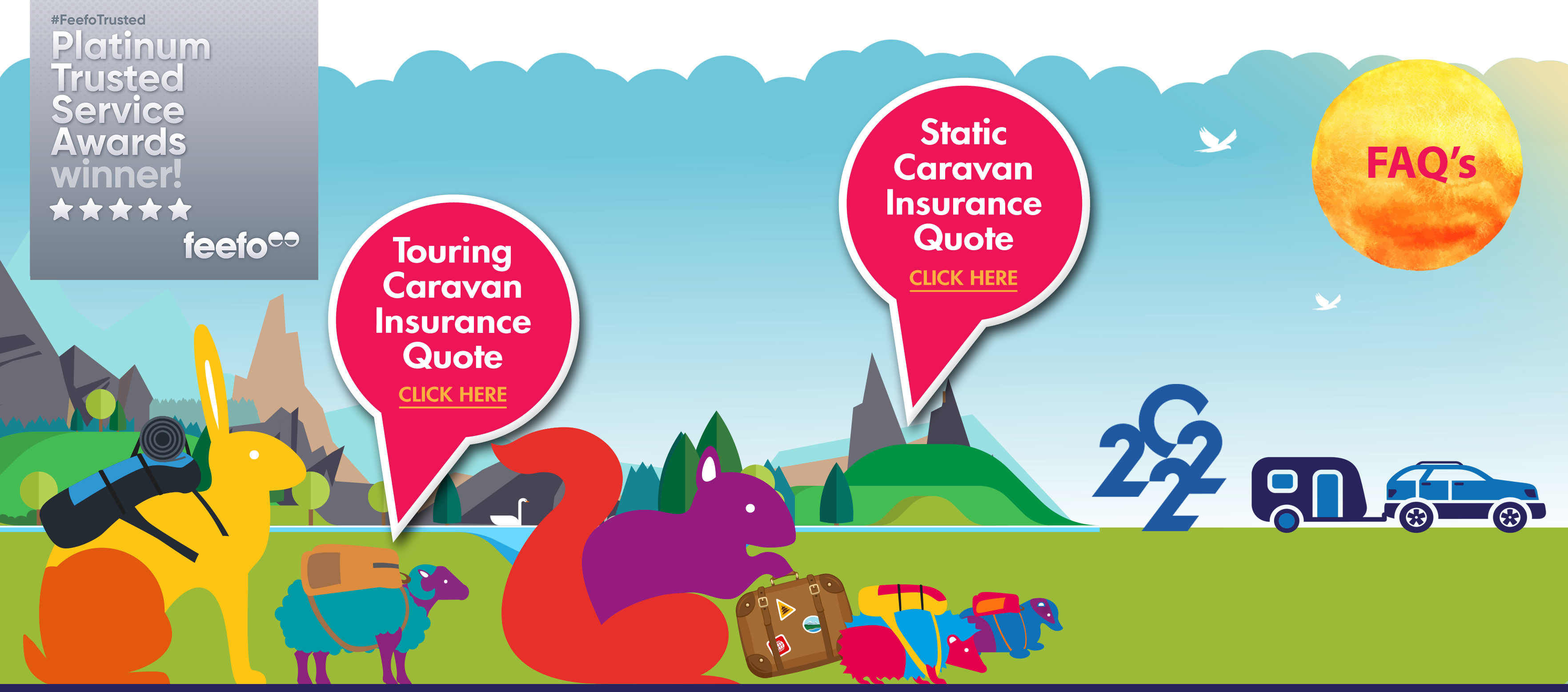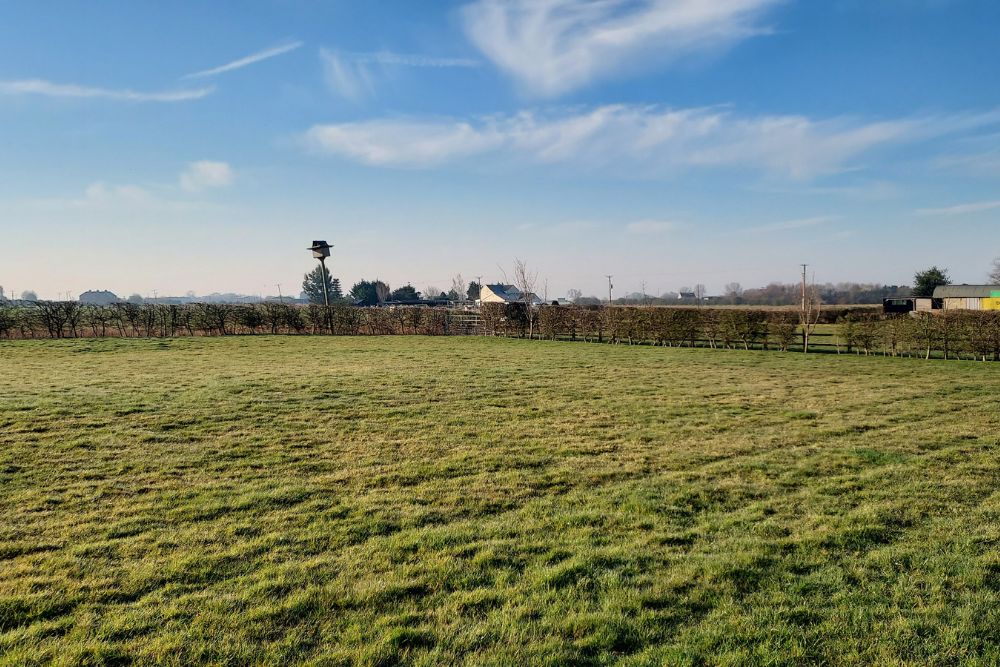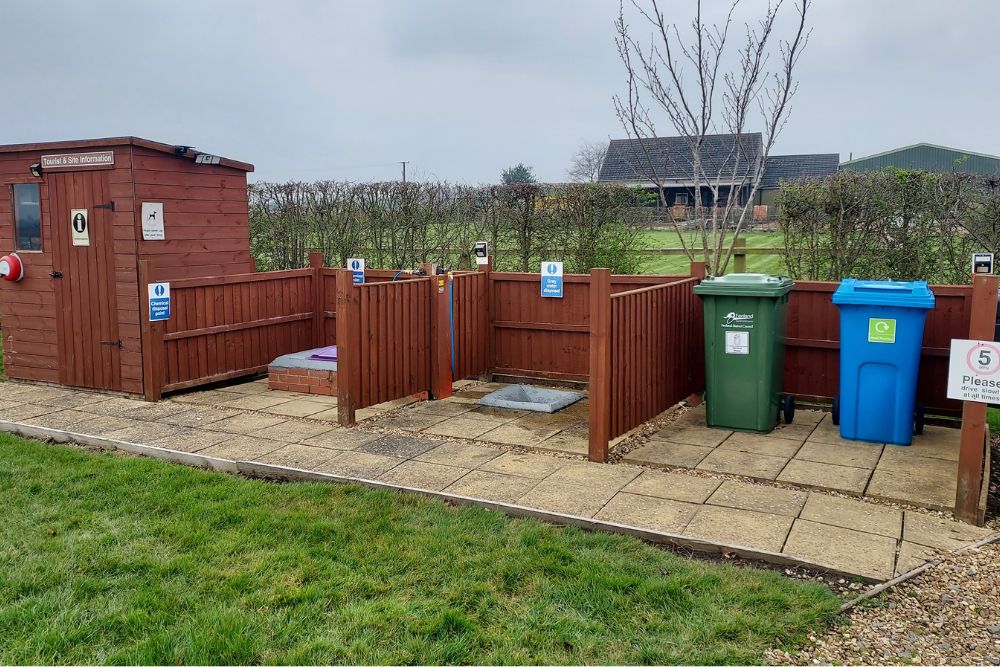Greenacres CL – Site Review
CAMC Members only 5-pitch site
Date of Visit: March 2025
This is an adults only, 5-pitch site for Caravan Club and Motorhome members only. Access is straightforward, if a little bumpy for the last mile or so – typical of fen countryside. Please see arrival video HERE. The site is situated to the rear of a business – not an issue regarding noise or traffic. During opening hours there is one key-coded security gate – out of hours, there are two. Security felt really good here.
The site has hedging all round which offers a good amount of privacy but does not detract from the flatlands of the fens and views are very far.
At night, there is a virtual blackout and it is possible to participate in some star gazing. You will need to bring a torch as a result.
Facilities
The site has 5 hard standing pitches, each has shared use of a water tap, plus your own EHU – 16A, included in pitch fee.
There is a small information hut by which there is the CDP, grey water disposal point and waste and recycling bins by the entrance to field.
There is free on-site WiFi which is very strong and allows for streaming without issue, although we were the only ones on site for the duration of our stay.
Mobile phone coverage with EE is 5G and a very good signal.
Review of Site Pitch
The whole site is level and each pitch is similarly level, no ramps were required. The width of the pitch will accommodate a caravan and awning, cars will need to be parked at the front of the van. The pitches are very clean and well looked after, grass is kept very well too.
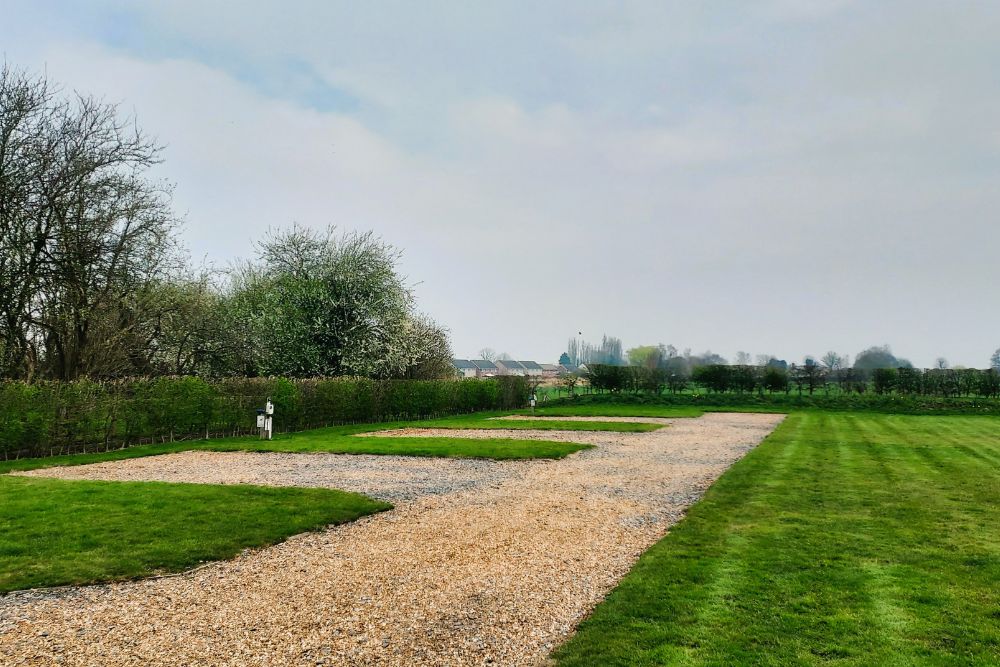
The site is dog friendly and the grass area to the front of the pitches is ideal for exercising your best friend. Care may be required with smaller dogs as regards the fence size.
As is the case with many sites in and around this area, you are close to a number of RAF airfields and as a result, they are all subjected to some aircraft training noise. This is mainly in the day but can be quite loud at times.
Around and about
The nearest petrol station, Shell is at Guyhirn about a 5 minute drive from the site on the A47 There is a small service station store attached for the very basics. There are all the main large supermarkets in and around the town of Wisbech including a Lidl and Aldi. Fuel wise, prices are cheaper at the supermarkets and away from the A47, the main road in the area. The Tesco on the outskirts of March was one of the most competitive.
There is no public bus stop within walking distance of the site.
Nearest train station is in March with onward connections to the Midlands and London via Cambridge.
There are a good number of places to visit, being close to the borders of Norfolk, Cambridgeshire and Lincolnshire. The main towns in the near area are, Peterborough
March, Wisbech. www.visitlincolnshire.co.uk ; www.visitcambridgeshirefens.org.uk ;
Slightly further afield are Chatteris and Whittlesey.
A good trip out is to Castle Rising – there is an entrance fee, it is dog friendly, and there is a small souvenir shop at the entrance. Free car parking with toilets is to one side of the Castle. www.castlerising.org.uk
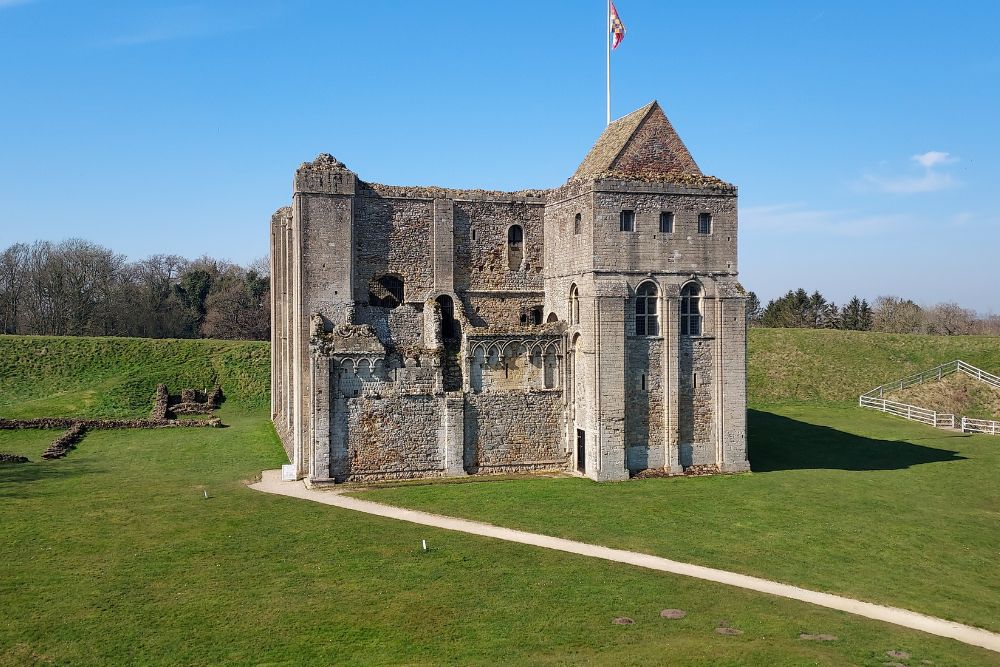
Afterwards, it is highly recommended that you visit the Castle Rising Tea Rooms down in the village – delicious meals, cakes, teas and coffees – if it is a lovely warm day, (as it was when we visited), you can sit outside in the front garden. It is dog friendly too. There are toilets and you can sit inside – the door entrance is quite small so it may be a tight fit to get a wheelchair in, we did not try to do so.
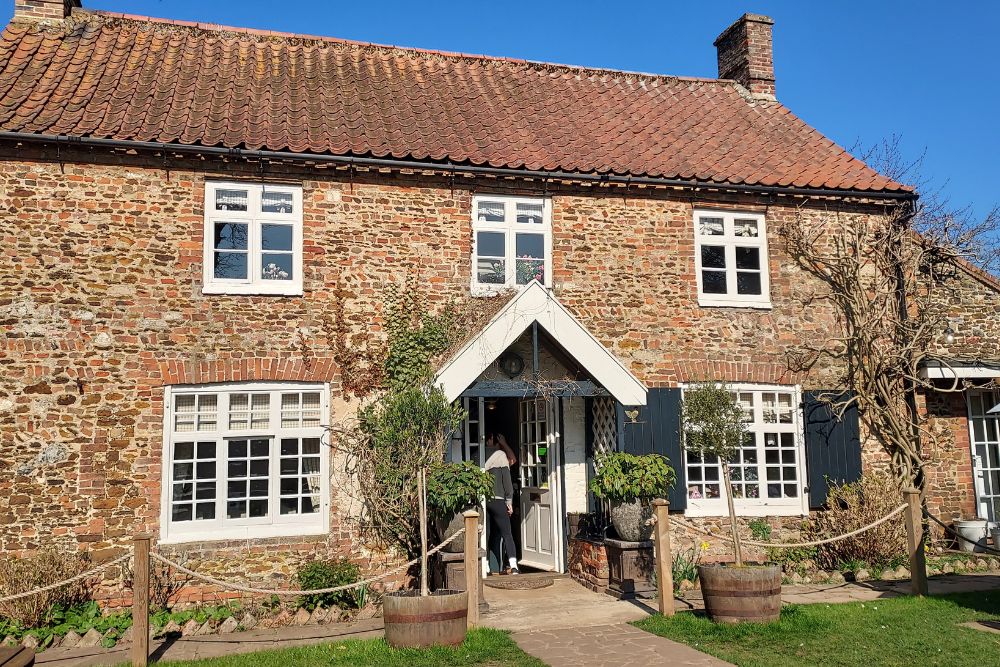
The nearest and highly recommended fish and chip shop is in Wisbech, a 15 minute drive along the back roads – SAT NAV is very helpful for navigating around here. Jolly Fryer Fish & Chips. A traditional fish and chip shop with a small sit in restaurant to the side. Parking is available on the road outside or in the adjacent Asda car park – also handy for stocking up.
We also visited the nearest local pub – very much for the local community, dogs and children are allowed. A small offering of snacks is available and a couple of local beers – Elgoods. The Bell, Murrow – a five minute car ride from the site. Football is shown and is obviously a big draw. Very friendly and welcoming to people from away, reasonably priced too but check opening hours.
Summary
A lovely site in the middle of the Cambridgeshire fens, excellent quality facilities and a well maintained good value site. Security is very good but you do need a car or bikes, the latter is very good as it is level for miles in any direction. Well worth a visit.
Old School House CL Norfolk Site Review
(CAMC Members 5 pitch site only)
Terrington St John, Wisbech, Norfolk
Date of Visit: February 2025
Overall View
This is a members only site in the parish of Terrington St John, midway between Wisbech and Kings Lynn. Access is good, please see ARRIVAL VIDEO here. The site is predominantly level, although we were on a hard standing pitch (no. 7) and a ramp was required on one side of the van. This did not cause any major issues.
The site is divided into roughly two halves. It has 3 pitches which are hard standing and are used during winter months. Drainage is good. The whole site is surrounded by mature hedging which affords you privacy whilst not taking away the views of the local Grade I listed St John’s Church. During the summer months, there are 5 grass pitches available in the other half of the field.
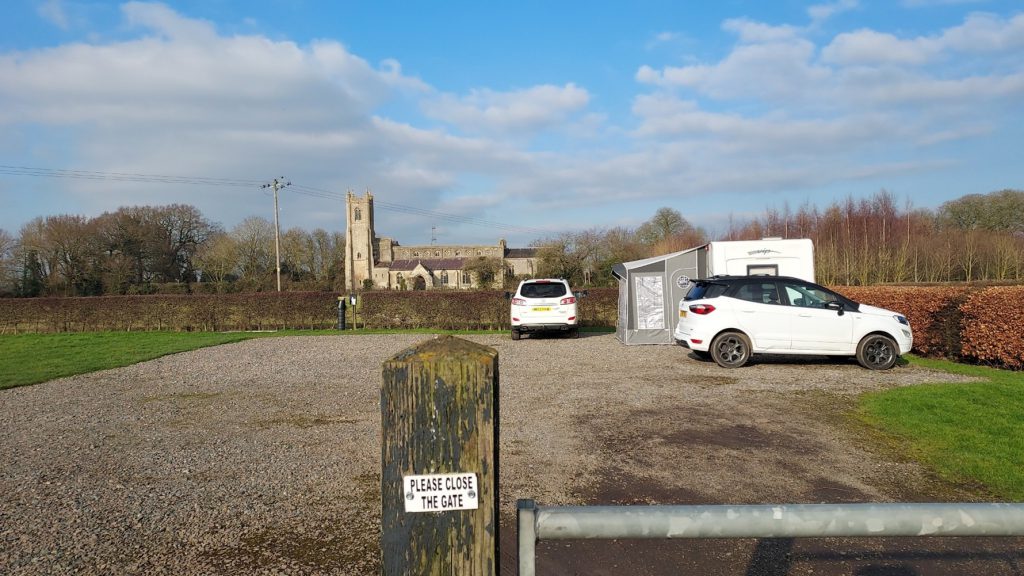
The site is fairly close to the A47; however we found the road noise was not invasive and certainly not outside of rush hour or overnight.
Facilities
Each pitch has its own EHU 16amps unmetered; fresh water tap and grey water drainage under the hedge. Essentially a fully serviced pitch which we found very useful indeed, particularly in the colder months.
Each pitch will take a car, caravan and an awning.
The site is gated although no padlock is used.
By the entrance to the site, there is the service area which has recycling bin, black waste bin, dog poop bin. In addition, there is the CDP emptying point, and a small information cubicle.
A particularly good draw, for the CL site, is that they have an enclosed, secure dog exercise field. This is at the end of the grassed area of the CL pitches, a dog poop bin is also provided along with a wooden picnic table with benches to use in warmer months! My two dogs really appreciated the freedom that this offered and made good use of it. If you are a dog owner, this is certainly worth taking a look at.
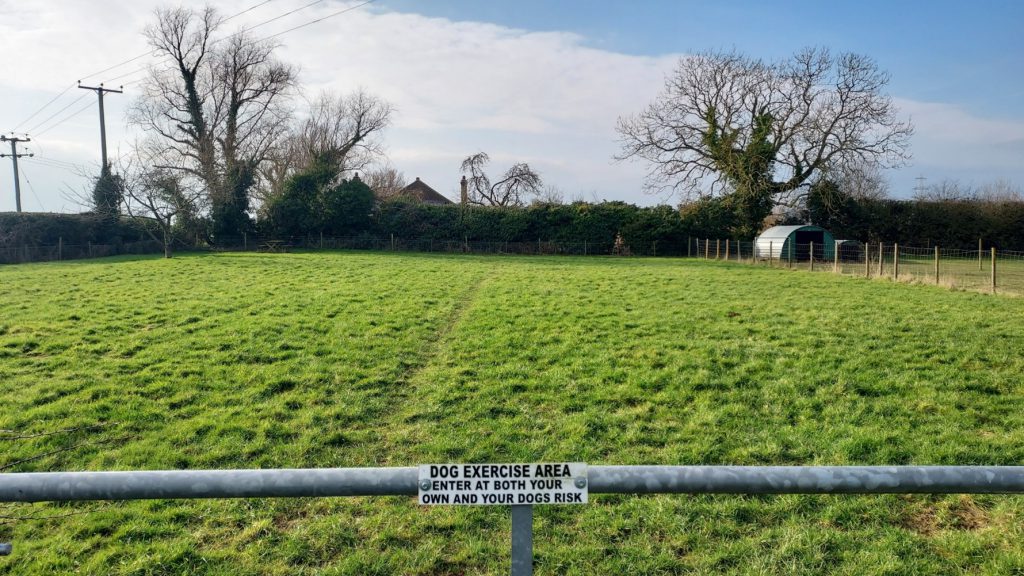
There is also an exclusive use shower and WC to the rear of the farmhouse. It is not disabled accessible but is spotlessly clean, tidy and there is an electric wall heater to take the chill off.
All in all, the facilities are the same as sites much bigger. There is a local village shop and pub a five minute car drive away in Terrington St Johns.
On site we found EE 5G mobile signal very good, both in and out of doors. Lycamobile, which uses the EE system, was good as well, particularly in streaming on the TV. TV signal on terrestrial was also good.
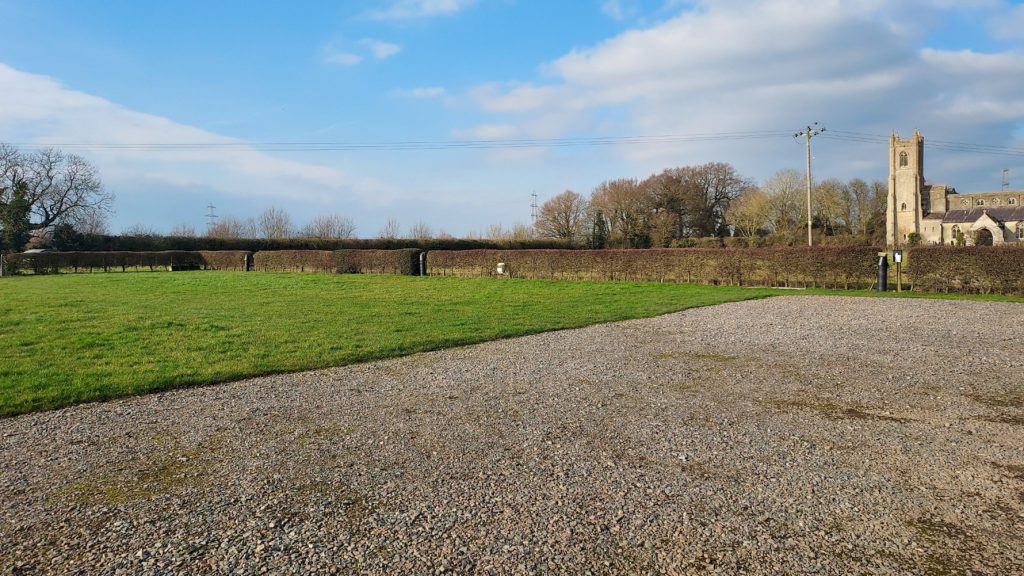
Review of Site Pitch
The hard standing pitch was free draining and using awning pegs was not problematical. The tap and waste pipe are not too far away from the van, so no extension pipes were required.
We opted to put the caravan face in, so as to make the most of the views and also to watch the site owners’ horse, sheep etc.
Around and about
The site is ideally placed to access north Cambridgeshire, Norfolk and slightly further afield South Lincolnshire. In particular the North Norfolk coasts and beaches are within half an hour’s drive from the site.
The Brothers in Arms pub, with an interesting history, offers a very good Sunday lunch with attentive service in very pleasant surroundings. It is very family friendly, accessible and welcomes dogs very happily. It has the added advantage of a Farm Shop to one side and we can certainly recommend their homemade Pork and Apple sausages. www.samuelsfarmshop.co.uk These are both located in Walpole St Andrew.
Palmers Ale House & Kitchen at Long Sutton is less than twenty minutes’ drive away, up to and west along the A17. Dog friendly, good food, ales and atmosphere. It was very cosy on a chilly night.
A trip to Downham Market, again about 20 minutes’ drive finds you in a pleasant market town. There are plenty of little shops, cafes as well as a Morrisons Supermarket. The clock tower, near the centre of the town is particularly noteworthy. Free parking is available but quite limited, to the side of Morrisons Supermarket which is a short stroll uphill to the centre of town and the clock tower. www.visitwestnorfolk.com
There are National Rail Services at Kings Lyn and Downham Market which connect with mainline services in Cambridge and on towards London. www.nationalrail.co.uk
Bus services are available on the main road in Terrington St John, a 25 minute walk from the site. www.lynxbus.co.uk
The nearest caravan dealer/workshop/accessories shop is John Wicks Caravan Sales – about a 20 minute drive from the site and a slight detour from the main Kings Lynn to Hunstanton road. They stock all the main consumables. www.johnwickscaravans.com
Fuel is readily available in either Wisbech or Kings Lynn where all the main supermarkets have fuel stations. On travelling around the area, we noted that there were several pence per litre differences between the various suppliers and it may well be worth your while spending a couple of minutes price checking on line before setting out. The site being pretty equidistant between the two towns, it pays to shop around.
In Wisbech there is Elgood Brewery situated alongside the River Ouse. There is a small shop where souvenirs and bottled beer can be obtained It may well be possible to organise a brewery tour and there are gardens which are open in summer months.
About ¾ hour drive from the site up the North Norfolk coast are the towns of Hunstanton, Wells Next the Sea. On the way to Hunstanton you will pass Norfolk Lavendar Centre on the right hand side. It is home to the National Lavendar collection. It has a farm shop, café, gift shop, toilets and plenty of gardens to walk round. Tours are available. Please see www.norfolk-lavender.co.uk for further details. Everywhere is fully accessible and dogs are allowed in the café and gift shop.
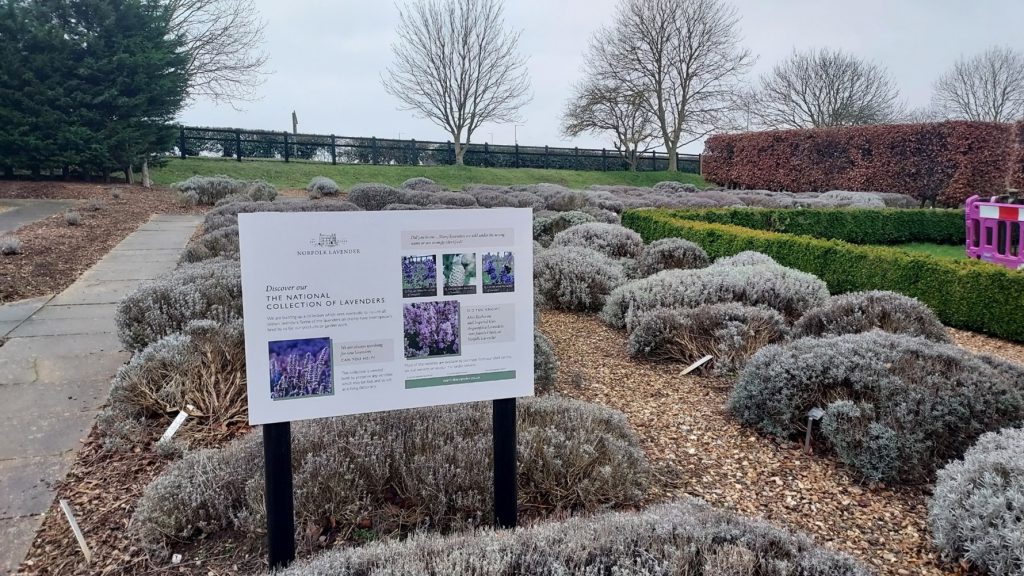
Both are well worth a day’s visit. Hunstanton is a traditional seaside town, split into two halves old and new with beautiful gardens along the promenade at the front. Parking is limited and everyone has to pay. However, there is on road parking further out of the main centre. The new section has many caravan sites overlooking the coast. www.visitwestnorfolk.com
A further 35 minute drive past some beautiful and sympathetically built houses in small villages – a pleasant drive, brings you to Wells Next the Sea – a picturesque seaside resort and also a small working port. At the time of our visit there was a tall ship moored on the main quay. A very quaint high street, Staithes Street offers some cafes, charity shops, butchers and deli. There are also a couple of hardware shops selling all manner of homeware good with stalls outside selling very reasonable priced goods to tempt you. There are a number of cafes which openly welcome dogs which was most appreciated on a cold February day. At the top of the street is a local Co-Op. www.wellsguide.com
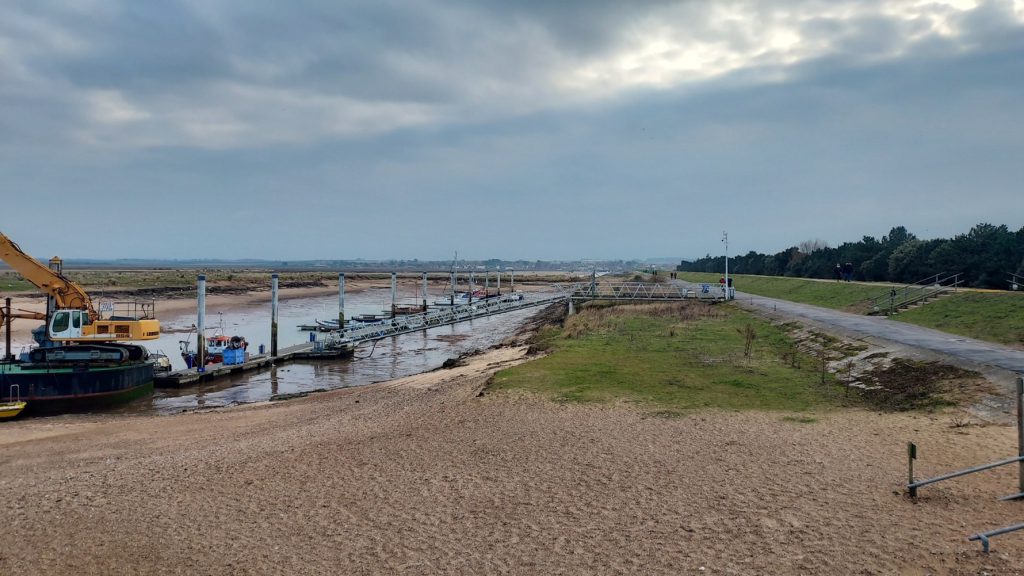
A very historic market town, Swaffham is again about 15-20 minutes from the site. It is centred around the market place where free parking is available for everyone. There are a number of antiques shops and some very old buildings with plenty of history. The town’s bandstand, to one side of the market place, has a roman statue on top – Cedres, god of the harvest. Very apt given the agricultural land surrounding it. Lord Nelson lived here at one time and it is said that his wife lodged in one of the big houses on the square when Lord Nelson was at sea. It was also a centre for medieval blood sports, hare coursing, badger baiting – long since disappeared but Swaffham hosted the landed gentry of the era afterwards and there are a good number of pubs and inn as a result. Finally, there is an Assembly Rooms – built in the 1800s and of very fine architecture. Its claim to fame was the fine ballroom where regular events were held during the various seasons.
The main purpose of our stay was to visit Kings Lynn Mart, which marks the traditional opening of the travelling fun fair season. Rides and stalls occupy the historic Tuesday Market Place for approximately two weeks, coinciding with the half-term holiday.

Summary
A very pleasant CL, competitively priced, in a very convenient location. The owners were very pleasant and welcoming. It is a site we would definitely consider returning to. The dog exercise field and toilet/shower being particularly noteworthy for a CL site.
Owner Satisfaction Awards 2025, Approved Workshops – award winners, recycling progress, a caravan show is cancelled

Are you busy preparing your caravan for the coming season of outings and holidays? Then you’ve probably earned yourself a breather while you catch up on some of these the latest UK caravan news headlines.
Meet the winners of the Owner Satisfaction Awards 2025
The awards season has kicked off with one of the most telling of them all, the Owner Satisfaction Awards, revealed by Practical Caravan magazine on the 18th of February in an event co-hosted by the Camping and Caravanning Club.
Whether you’re interested in buying a new or pre-loved caravan – or simply curious to discover what others think of the one you own – here is a brief listing of some of those best-liked by recent customers:
Manufacturers of new caravans
- Hull-based British manufacturer Coachman and the Slovenian company Adria scooped the gold awards;
- the Swift Group, Bailey, and Elddis/EHG all claimed silver awards;
Manufacturers: pre-loved caravans
- Coachman won a gold award in this category too, along with Lunar, the Swift Group, and Bailey;
- Elddis/EHG won the silver award;
Best manufacturer – new and pre-loved caravans combined
- it probably came as no surprise, therefore, that Coachman won the coveted gold award for the overall best manufacturer in both new and pre-loved categories;
- Bailey, the Elddis Group, and the Swift Group all claimed silver awards.
There were also prizes for the best-supplying dealers of both new and pre-loved caravans.
Approved Workshops Scheme award winners announced
An event sponsored by the National Caravan Council (NCC) recently recognised companies participating in the Approved Workshops Scheme for caravan services.
This year’s top award for Fixed Workshop services went to Kirk Caravan Services of Lanark, Lanarkshire, in Scotland, while the winner of the category for mobile services went to Kurts Mobile Caravan Services, based near Thirsk in North Yorkshire. Both workshops have been members of the Approved Workshops Scheme for many years.
Finalists in this event were also largely old hands in caravan services and included:
- JB Caravan and Trailer Services of Staffordshire (which won the Approved Workshop award in 2021 and 2023, and was a finalist in 2022);
- Cara-Fix Midlands, of Staffordshire (the winner of the 2022 competition and finalist in 2021 and 2023);
- Tourer Techs Caravan Services of Highbridge in Somerset (winner of the top award in 2023); and,
- Caravan Motorhome Care Services, of Bristol.
Simpler Recycling: what you need to know
In an announcement on the 7th of February, the Caravan and Motorhome Club lent its unequivocal support to the government’s sustainability campaign called Simpler Recycling.
The Simpler Recycling campaign in England follows a successful trial in Wales and introduces standardised separation and collection of materials for recycling – replacing the hotchpotch of schemes run by different councils throughout the country.
In keeping with the initiative, the Caravan Club is setting up new waste and recycling areas – prominently near site entrances – where members can separate their waste into the appropriate recycling bins ready for collection by specialist waste processors.
The Great Caravan, Motorhome and Holiday Home Show is called off for 2025
Caravanners in the north east of England in particular are likely to be disappointed by the news that this year’s Great Caravan, Motorhome and Holiday Home Show has been cancelled, announced Practical Caravan magazine on the 31st of January.
The show is organised by the Hull and East Riding Caravan Manufacturers Association (HERCMA) which gave scant details about its reasons for cancelling the event – other than a reference to the “financial challenges currently being faced by manufacturers within the leisure sector”.
Past events have attracted more than 22,000 visitors and the organisers stressed that the recent cancellation would not necessarily mean the end of the show for all time.
Stress-free caravanning: Quick tips, security, and insurance essentials

Caravanning isn’t just a holiday – it’s a way of life. Whether you’re a seasoned road-tripper or just starting out, the key to a stress-free adventure is preparation, security, and having the most appropriate touring caravan insurance. This blog covers some need-to-knows to keep your travels smooth and worry-free, from must-have safety tips to saving money on the road.
- Prepping for the perfect trip
A little planning goes a long way when it comes to hassle-free caravanning. Before you hit the road, make sure to:
- check your caravan’s tyres, brakes, and lights – regular maintenance avoids unpleasant surprises;
- secure loose things inside – you don’t want pots and pans flying about while driving;
- plan your route – stick to caravan-friendly routes and take note of fuel stops;
- make a checklist of essentials such as petrol bottles, extra fuses and first aid supplies to save the day.
A simple pre-trip routine helps you avoid delays and ensures you’re set for adventure.
- Caravan security: Protecting your home on wheels
Your caravan is an investment, so keeping it safe is a top priority. Here’s how to boost your security:
- use high-quality wheel and hitch locks – these make it harder for thieves to tow your caravan away and may typically be required as part of your caravan insurance cover;
- install an alarm or tracking device – GPS trackers help you recover your caravan if it’s stolen;
- park in well-lit, secure locations – whether at home or on-site, visibility deters criminals;
- use motion-sensitive lighting or cameras – great for extra peace of mind when you’re parked up for longer stays.
Improving security doesn’t just protect your caravan – it may help lower your caravan insurance premium (such as when storing your ‘van at a CaSSOA-approved site when not in use).
Further reading: Security devices for your static home
- Caravan insurance: What you need to know
While touring caravan insurance isn’t legally required in the UK, it’s a smart move to protect yourself against theft, damage, and unexpected costs.
Here’s what to look for in a policy:
- touring vs. static cover – touring caravan insurance covers you on the road, while static policies are for permanently parked holiday caravans;
- comprehensive protection – look for cover that includes accidental damage, theft, fire, and storm damage;
- new for old vs. market value – a new-for-old policy replaces your caravan with a new model, while market value pays out based on depreciation (subject to policy limits);
- public liability insurance – if your caravan causes damage or injury, this cover protects you financially.
A suitable caravan insurance policy means you can relax and enjoy your travels, knowing you’re covered if the unexpected happens.
- Smart budgeting: Saving money on your travels
Caravanning is a cost-effective way to holiday, but there are even more ways to save:
- join membership clubs – many offer discounts on campsites, fuel, and ferry crossings;
- travel off-peak – campsites and toll roads are often cheaper outside of peak season;
- cook in your caravan – save money by whipping up meals instead of dining out;
- invest in solar panels – a great way to cut down on electric hook-up fees.
By budgeting wisely, you can enjoy more trips without breaking the bank.
Further reading: 15+ ways to save money on your caravanning.
- Must-have gadgets for modern caravanners
The right gear can make your caravan trips even easier. Here are some must-haves:
- solar-powered chargers – keep your devices running, even when off-grid;
- reversing cameras – make parking a breeze;
- wi-fi boosters – stay connected, even in remote locations;
- portable BBQs – enjoy delicious meals wherever you stop.
A few smart investments can make life on the road more comfortable and convenient.
Further reading: Guide to Caravan Gadgets and Which caravan gadgets?
Final thoughts
With a bit of planning, smart security, and the appropriate caravan insurance, you can hit the road with confidence. Whether it’s a weekend escape or a months-long adventure, taking these simple steps will keep your travels smooth and stress-free.
Visit Charming Cambridge

It’s nestled in the heart of East Anglia. It’s just an hour’s train ride from London. Yet the two cities could be whole worlds apart. Truly, you can call it charming Cambridge. Let’s consider what makes it such a special place to visit.
The University
It’s impossible to think of Cambridge without bringing to mind the city’s ancient and world-renowned university. This global icon of academic excellence started life in 1209 and has grown to comprise a total of 31 separate colleges scattered across the city.
Every college tells a story, and each one represents a unique architectural wonder. King’s College Chapel, of course, is probably the most immediately recognisable – you’ll see its choir on the television practically every Christmas. The Great Court at Trinity College is not only steeped in history but the largest of this kind of architectural feature.
Soak up the complete Cambridge experience by taking a punt along the River Cam, where the “Backs” offer the lush green fields that provide a fitting backdrop to the university’s ancient splendour.
Cultures galore
It’s not only in academia that Cambridge hits its zenith – cultures galore spring up in practically every direction you might turn.
There’s the Fitzwilliam Museum, for instance, which houses centuries of treasures stretching from Egyptian mummies to paintings by the leading Impressionists. Visit further back in time at the Museum of Archaeology and Anthropology for a global take on all of human history.
Enjoy your cultural pursuits outdoors as you stroll through the 40 acres or so of the Cambridge University Botanic Garden’s 8,000 and more plants. While still on two feet, you can also recreate the walks inspired by the poets Wordsworth or Sylvia Plath as they grew to love the city.
If it’s festivals you’re after, music lovers will flock to the Cambridge Folk Festival while those of a more serious bent will hang out at the all-embracing Cambridge Festival.
Contrasts: ancient and modern
Sure, Cambridge has probably more than its fair share of time-worn medieval courtyards and cobbled lanes. But it’s also a city of the future – as the shiny new labs of “Silicon Fen” give witness to the city’s pride and joy and Europe’s largest tech cluster.
Stroll through Market Square, where established traders and aspiring newcomers sell their local produce, street food, and local crafts. Along the way, browse through the quirky delights of the independent shops that line Mill Road.
For that welcome break, let ancient meet modern in the relaxing and welcoming atmosphere of a traditional English pub – the Eagle and the Anchor are two that spring readily to mind.
Easy to explore green spaces
Cambridge is a small city. That makes it especially easy to get about – either on foot or by bicycle. For a city of its size, Cambridge also has abundant green and open spaces.
The largest of the parks is Parker’s Piece – a huge common ideal for summer picnics while watching the cricket perhaps. If you’d prefer the quiet tranquillity of a riverside snooze, then Jesus Green would likely hit the spot.
If you want to explore the surrounding countryside, there are still further treasures in store. Not least of them, perhaps, is the village of Grantchester on the fringes of the city. Ely Cathedral is just 15 miles to the north. And in between lies sumptuous East Anglian countryside.

